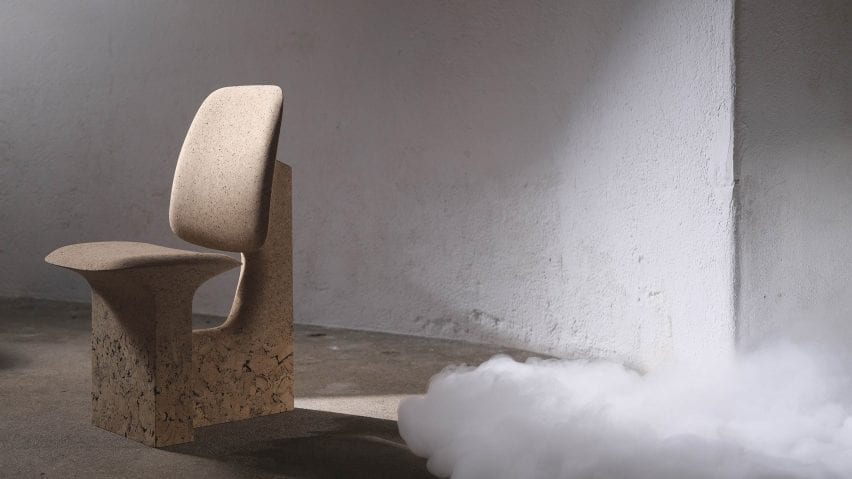
Noé Duchaufour-Lawrance creates furniture showcasing beauty of discarded burnt cork
French designer Noé Duchaufour-Lawrance has used discarded burnt cork to create this furniture collection featuring sinuous forms and a gradient of textures.
Created through Duchaufour-Lawrance's Portugal-based studio Made in Situ, the Burnt Cork collection of chairs and tables are all carved from blocks of cork, similar to those used in buildings as insulation.
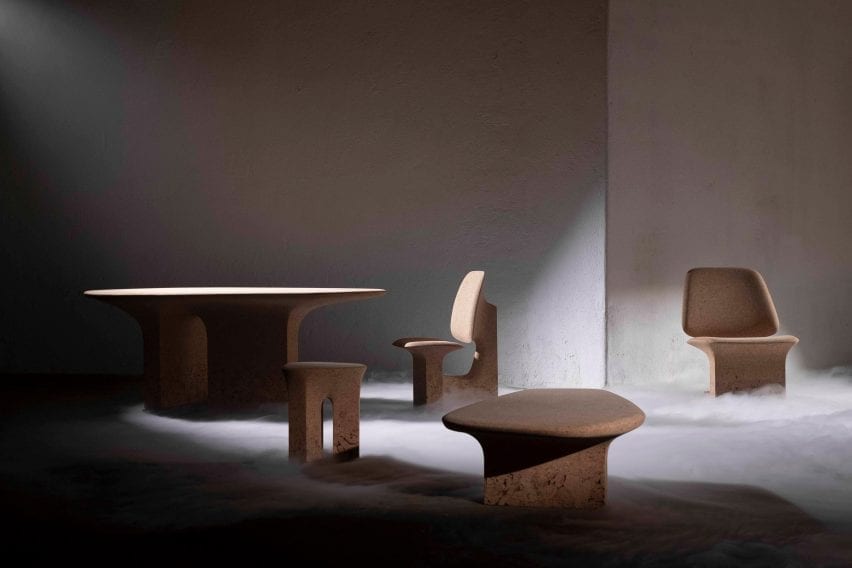
Duchaufour-Lawrance developed his own twist on the process to incorporate the rougher textures of burnt cork, which is usually an industrial waste product.
The seed for the collection was planted when the designer first moved to Portugal in the summer of 2017. He did the three-day drive from France alone, encountering devastating forest fires in the hills of Pedrógão Grande along the way.
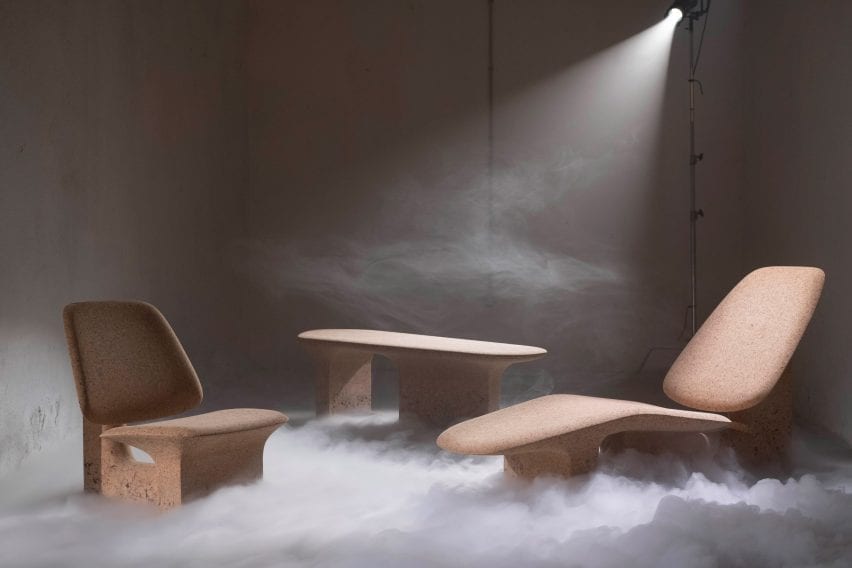
"It was a shock to drive into these hills ablaze, the inferno consuming the landscape and leaving behind a world of visible entropy," Duchaufour-Lawrance said in a blog post. "The power of fire struck me, one of the five elements vital to existence on earth, a keystone to the development of culture."
"Fire is somehow always beautiful," he continued. "Part of me didn't want to think about this, but I took photos and this experience stayed with me. It made me question my interaction with nature as a designer and as a consumer. I felt it would resurface in the work I was to do here in Portugal."
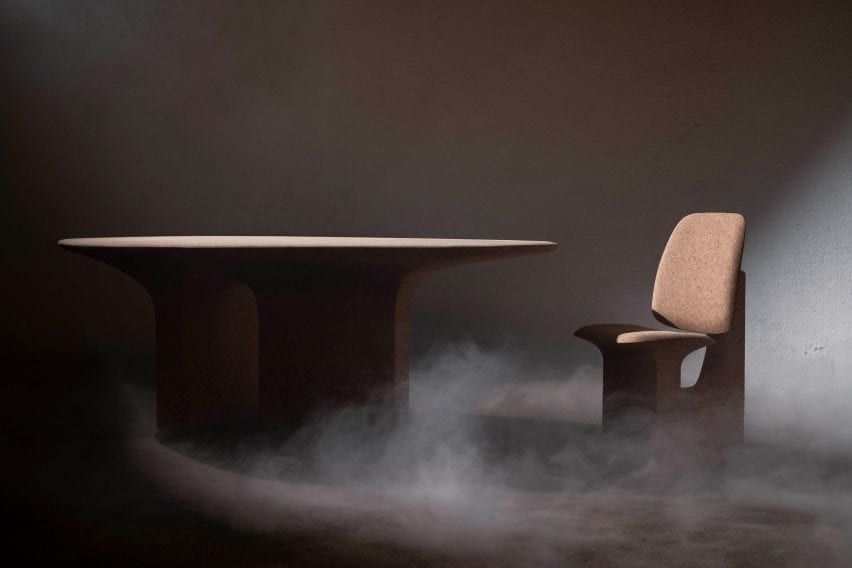
The time to explore these ideas came in October 2018, during a visit to NF Cork, a small family-owned cork production facility in Faro, as part of a cross-disciplinary exchange set up by Made in Situ.
There, the designer learnt about the process of turning cork bark into blocks, but he also discovered one of its unused waste products, burnt cork.
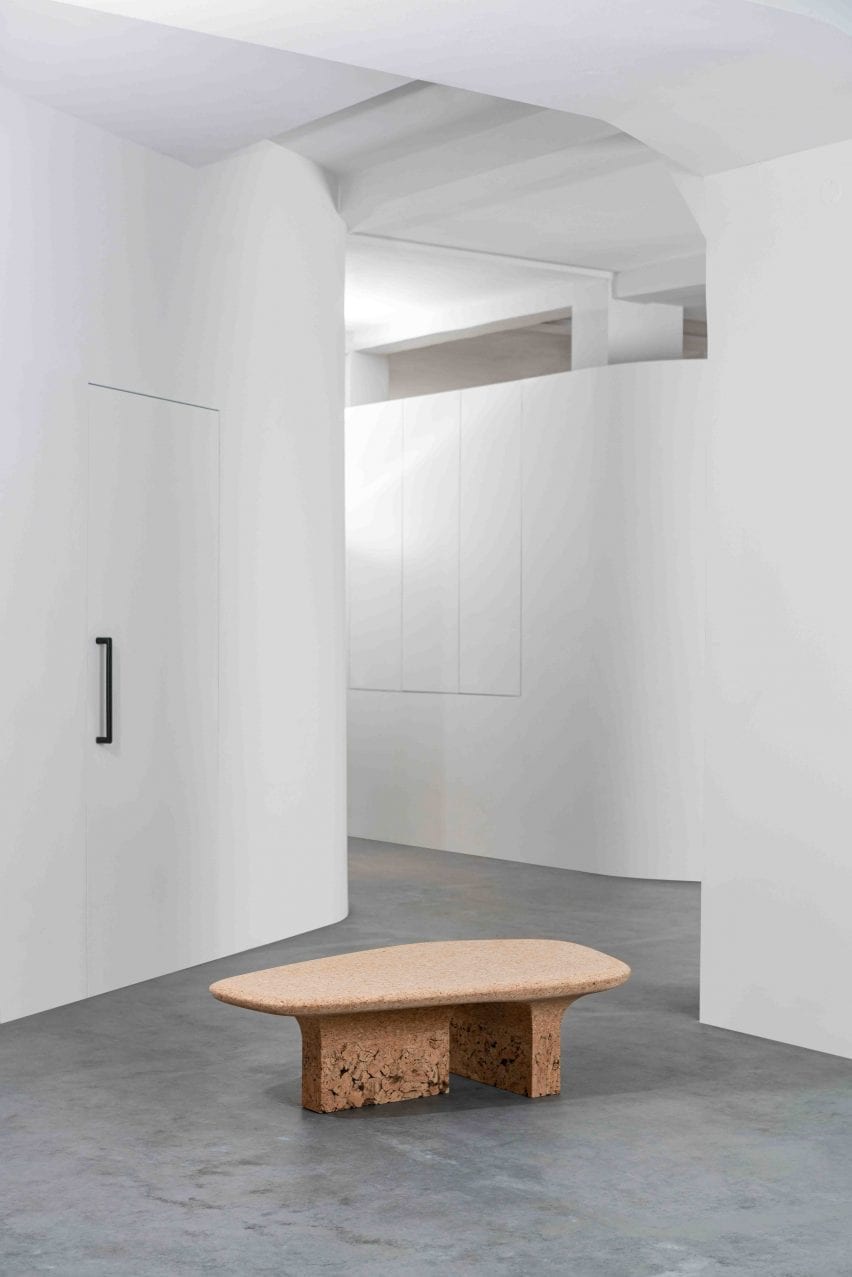
Cork comes from the cork oak tree, or quercus suber, and is one of Portugal's biggest exports. During forest fires, the top layer of bark chars and protects the tree beneath, and cork producers need to peel this layer off to promote new growth.
Duchaufour-Lawrance saw the opportunity to finally make a creation that was born from fire, and over the next two years, he experimented with ways to incorporate the burnt cork into NF Cork's traditional block-making technique.
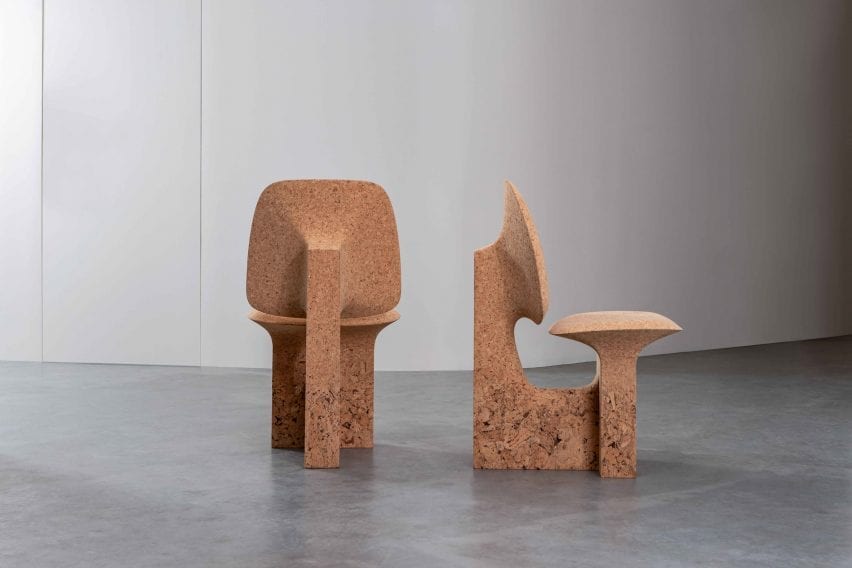
The traditional process involves mixing and glueing cork granules together in a mould, cooking the block for 16 hours, and then drying it over six weeks.
Duchaufour-Lawrance incorporated different sizes of granules with the goal of achieving a gradient effect ranging from the fine grain of traditional cork to a bark-like texture where the charcoal of the burnt material dominates.
In his Burnt Cork pieces, the rougher end of the gradient appears in the furniture bases, which feature vertical shapes to make the textures particularly visible.
These transition into smoothly curved seats and backrests that welcome the body. In the case of the tables, they form rounded tabletops that invite touch.
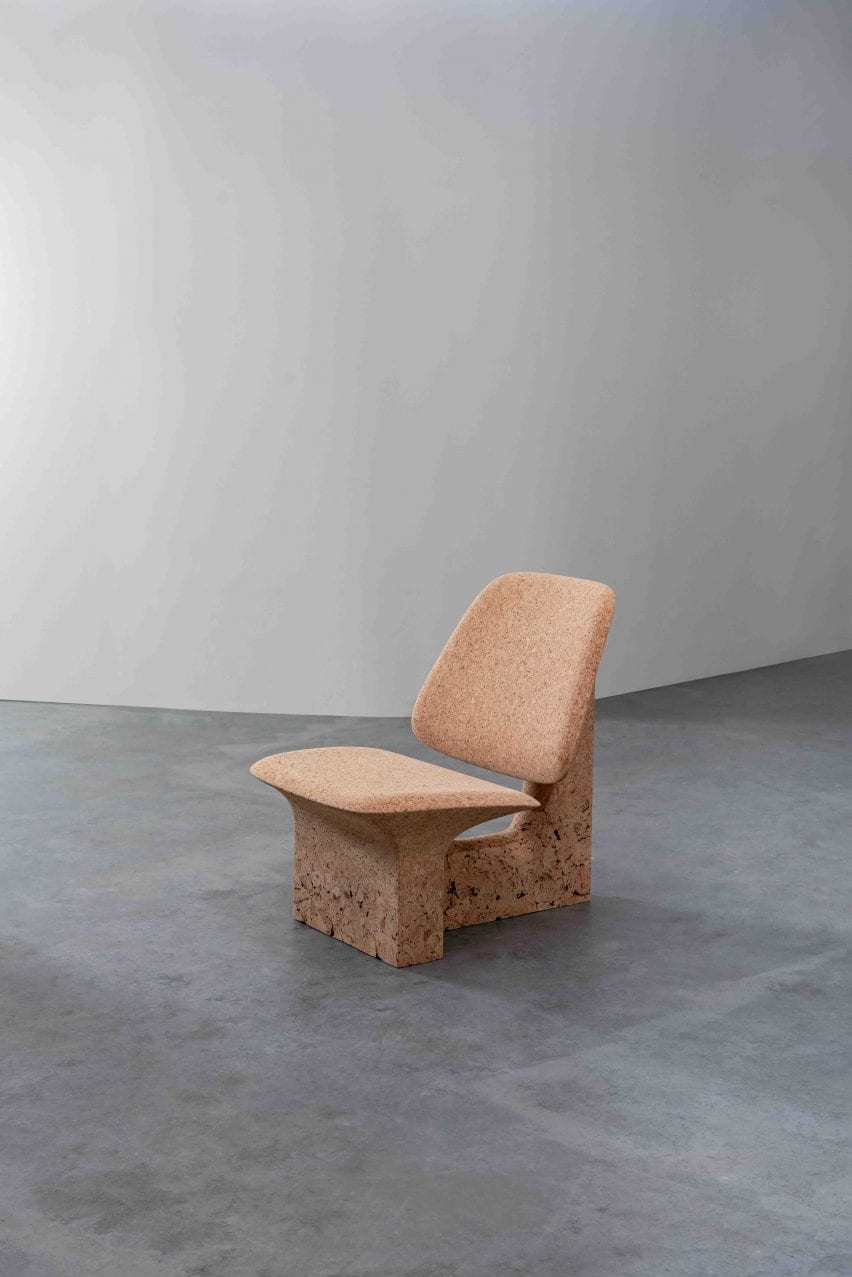
"I wanted the user to have a direct connection with the cork as it is on the tree," said Duchaufour-Lawrance. "And thus the gradient from rawness to refinement. Connecting directly with the history and process of the material itself."
The furniture was carved by another Portuguese company, Granorte, using a seven-axis CNC machine capable of sculpting organic forms.
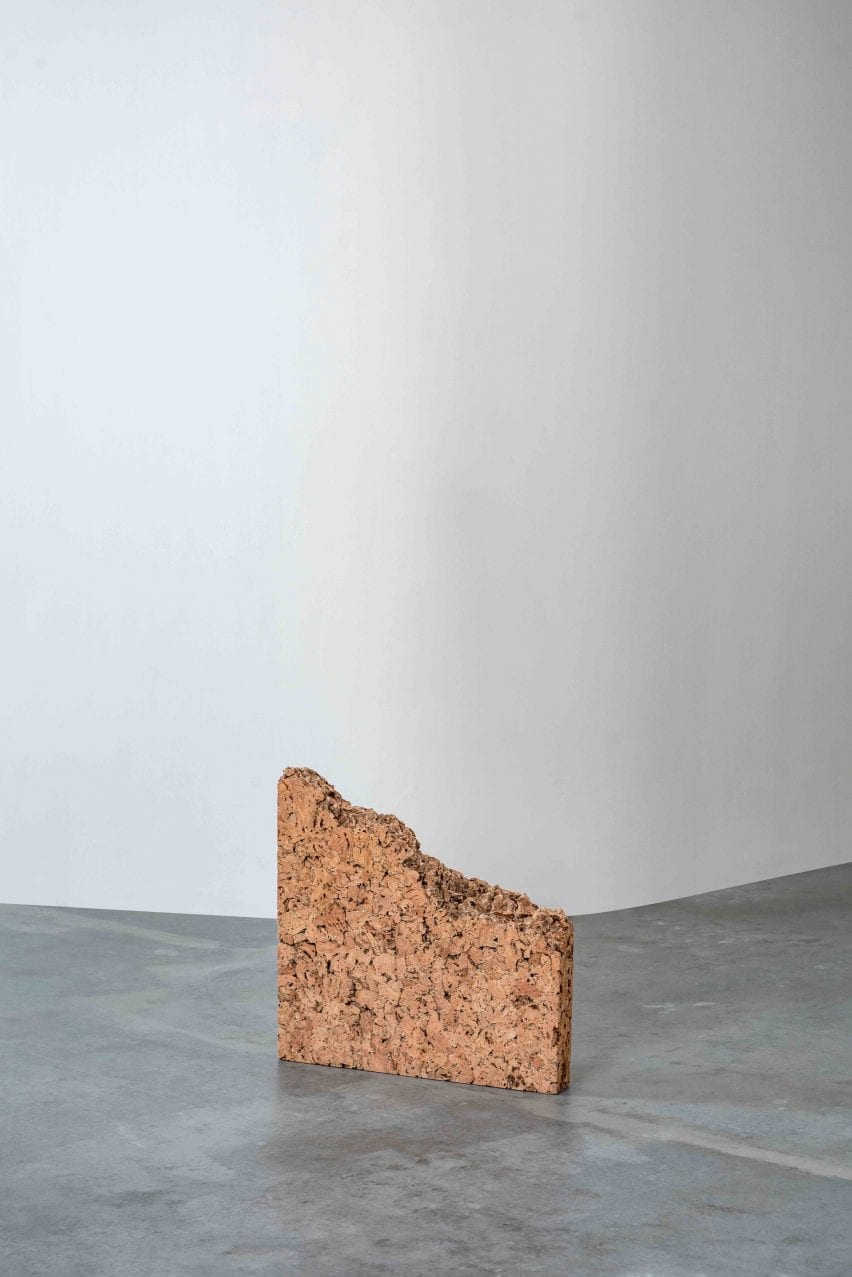
This makes the Burnt Cork series a fusion of both handmade and industrial processes, with both companies pushing their techniques into new terrain.
The full collection consists of a dining chair, lounge chair, chaise longue, dining table, two low tables and a stool.
Duchaufour-Lawrance told Dezeen that the project had made him appreciate the beautiful properties of cork.
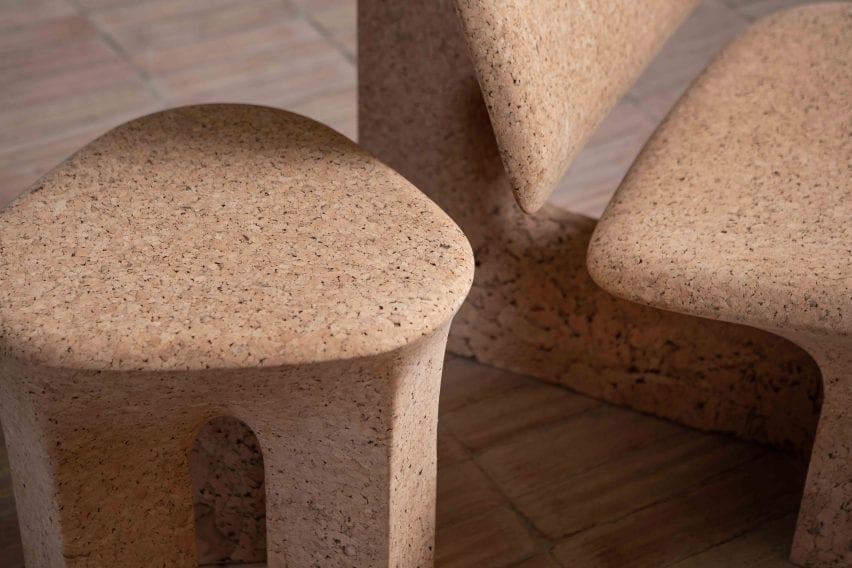
"It is impermeable, buoyant, elastic, and fire retardant," he said. "Every cork oak forest has its own microclimate. It is not exactly a natural ecosystem as it requires the human hand, but it is a very old and very sustainable ecosystem."
He considers Burnt Cork to be a tribute to Portuguese cork representing resilience.
It is the second project from Made in Situ, which presents a very limited number of pieces for every collection.
Among Duchaufour-Lawrance's previous furniture designs are the Harper rocking chair for Bernhardt Design and the Aoyama overlapping glass table for Ligne Roset.